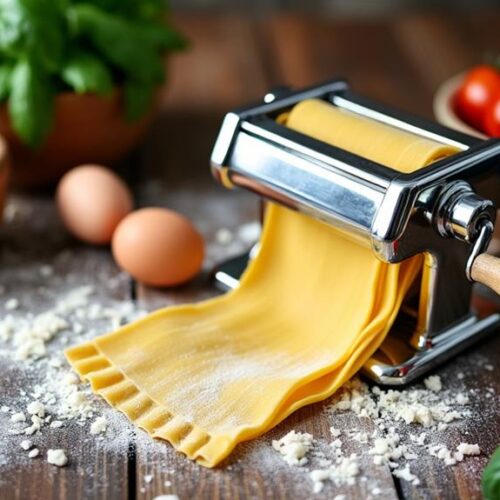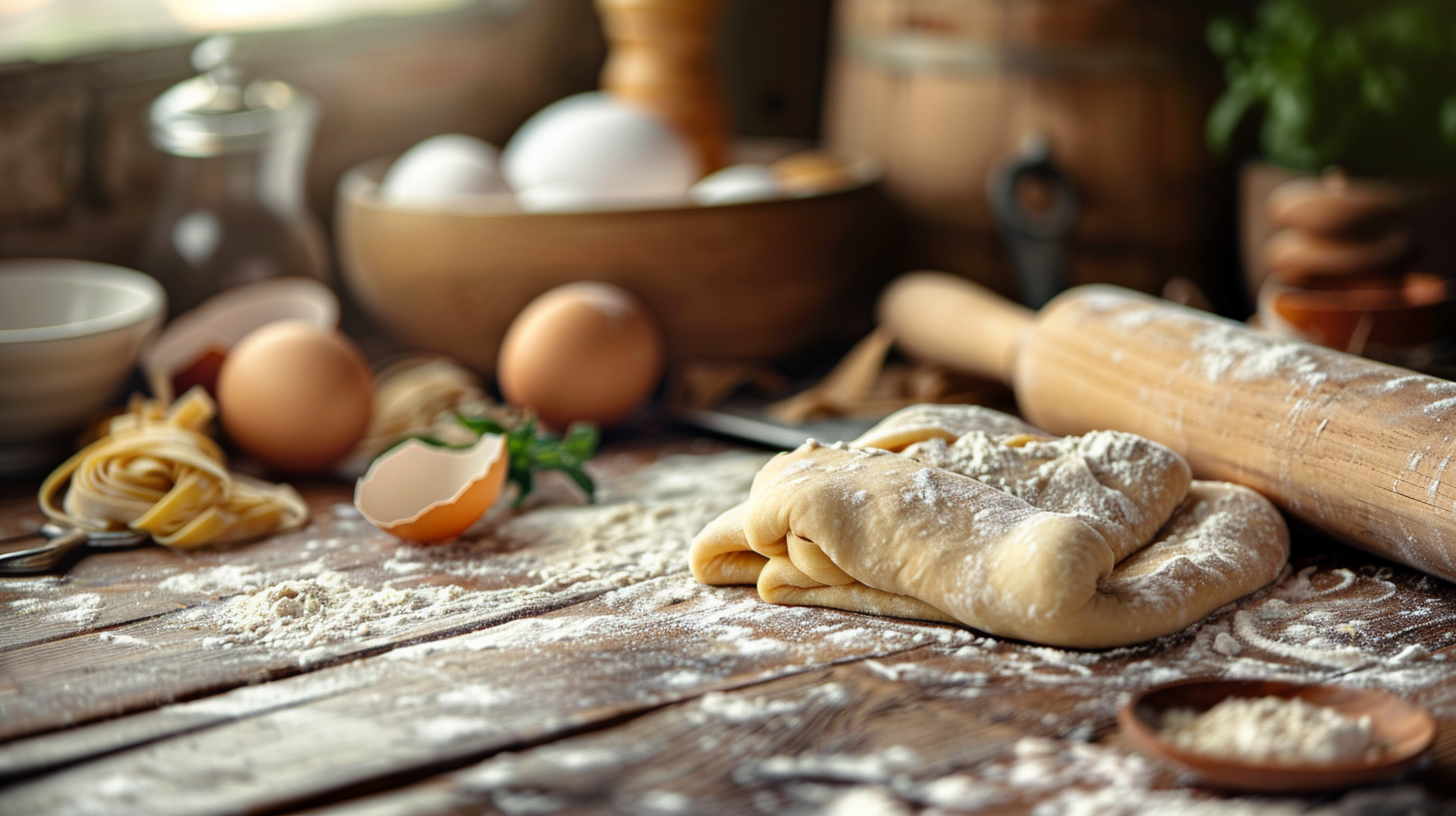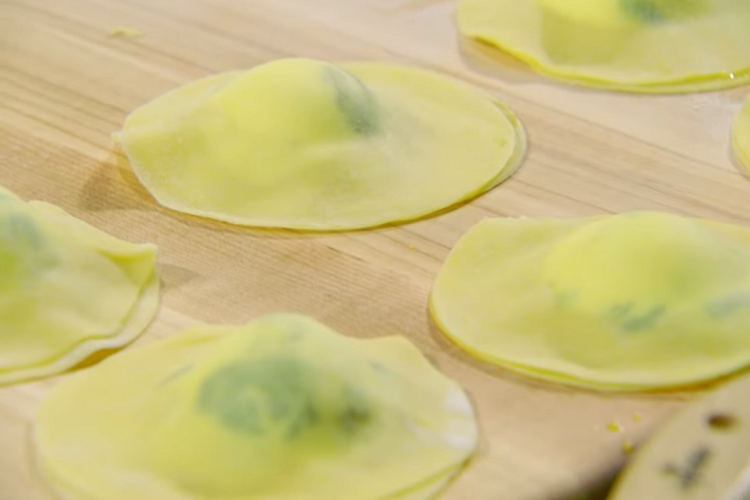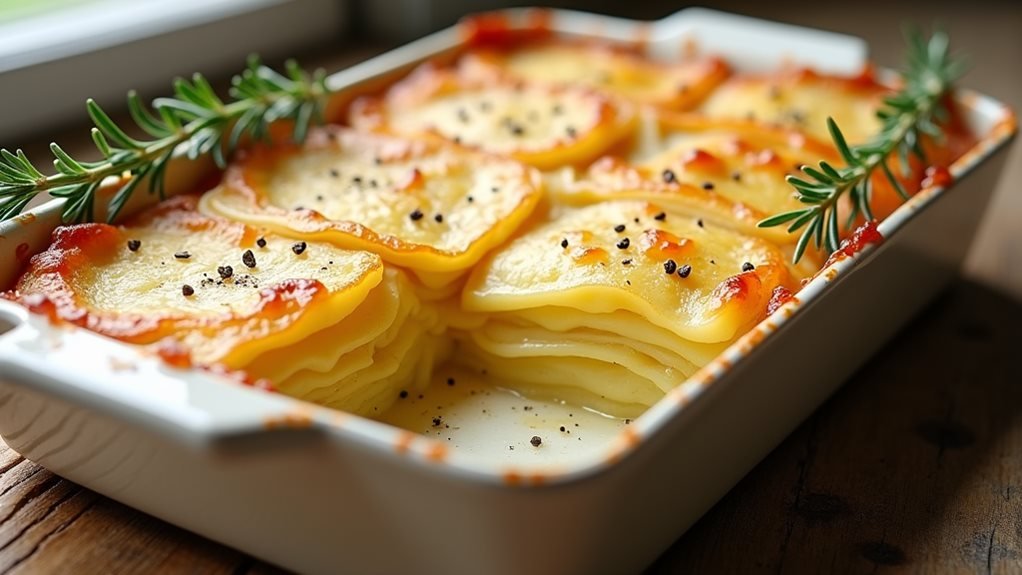Making Gordon Ramsay’s Pasta Dough requires precision and technique to achieve the right texture and consistency. The process combines simple ingredients – flour, eggs, olive oil, and salt – into a silky smooth dough that forms the base for countless Italian dishes.
The secret to perfect pasta dough lies in the quality of ingredients and proper kneading technique. Using Type 00 flour or semolina flour creates the ideal protein content, while room-temperature eggs help form a more cohesive dough that’s easier to work with.
Essential Ingredients for Pasta Dough
- 400g Type 00 flour or semolina flour
- 4 large eggs (room temperature)
- 2 tablespoons olive oil
- 1 teaspoon salt
- 1-2 tablespoons water (if needed)
Step-by-Step Process
Create a mound of flour on a clean work surface and make a well in the center. Crack the eggs into the well and add olive oil and salt. Using a fork, gradually mix the eggs while incorporating the flour from the inner edges. Once combined, knead the dough for 10-12 minutes until smooth and elastic. Wrap in plastic and rest for 30 minutes at room temperature. Roll through a pasta machine, starting at the widest setting and gradually decreasing until the desired thickness. Cut into preferred shapes.
Advanced Tips
The dough should spring back when pressed with a finger – this indicates proper gluten development. Keep the dough and cut pasta covered with a clean kitchen towel while working to prevent drying. For the best results, cook fresh pasta in heavily salted water for 2-3 minutes or until it floats to the surface.
Storage Guidelines
- Fresh: 24 hours in refrigerator
- Dried: 2-3 days at room temperature
- Frozen: Up to 1 month
- Store in an airtight container with semolina dusting
Safety Considerations
- Use pasteurized eggs if concerned about raw egg
- Clean equipment thoroughly
- Maintain proper hand hygiene
- Store at appropriate temperatures
- Check ingredient freshness
- Keep pasta sheets covered while working
- Dust with semolina, not flour, when cutting
- Allow cut pasta to dry slightly before cooking
- Cook in heavily salted water (tastes like seawater)
- Test for doneness at 2-3 minutes for fresh pasta
Preparation Environment
- Room temperature: 68-72°F (20-22°C)
- Clean, dry workspace
- Marble or wooden pasta board
- Ingredients at room temperature
Pasta Machine Settings
- Start at the widest setting (usually 0)
- Fold and pass through 3-4 times
- Gradually decrease settings
- Final thickness:
- Fettuccine: Setting 5-6
- Tagliatelle: Setting 6
- Ravioli: Setting 7
- Linguine: Setting 5-6
Troubleshooting Common Issues
- Dry dough: Add water, one teaspoon at a time
- Sticky dough: Incorporate more flour gradually
- Cracking edges: Dough needs more kneading
- Tough texture: Excessive kneading or wrong flour type
Variations and Alternatives
Colored Pasta
- Spinach: Add 1/2 cup pureed spinach
- Squid ink: 1 tablespoon per recipe
- Beetroot: 2 tablespoons puree
Gluten-Free Option
- Replace 00 flour with:
- Rice flour blend
- Xanthan gum (1 teaspoon)
- Additional egg yolk

Gordon Ramsay Pasta Dough
Ingredients
- 2 cups 00 (double zero) flour
- ½ tsp. Salt
- 1 tsp. extra virgin olive oil
- 4 whole eggs at room temperature
- 2 egg yolks
Instructions
- Put the ingredients in the food processor and mix until you get a cohesive mixture that’s soft and just a little sticky—about 45 seconds.
- Knead the dough by hand, form it into a uniform ball and tightly wrap it in plastic film for 30 to 4 hours.
- Divide the dough into equal portions and feed it through the pasta machine rollers twice (with rollers in their most extended position).
- Seal the dough’s tapered ends together by pressing and feeding it again through the rollers, still set in the most extended position (remember to keep the seal at the top).
- Reduce the roller width by one setting and pass the dough through the machine twice. Keep reducing the roller width and passing the dough twice through each setting until you get an almost transparent consistency.
Video
Notes
Fresh pasta offers a superior taste and texture compared to dried alternatives. Master this basic dough recipe to create restaurant-quality pasta dishes at home, from classic fettuccine to stuffed ravioli.








